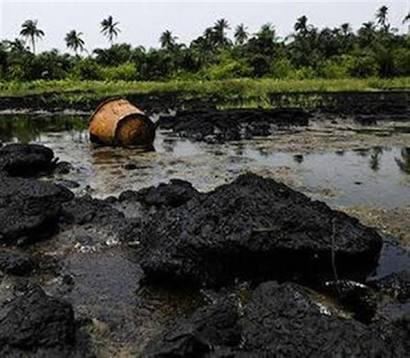Environmental consequences of Hydrocarbons..
While the economic significance of hydrocarbons as the primary source of fuel and its versatile application in downstream industries are obvious, the product may also have major environmental consequences. In looking at the environmental consequences of hydrocarbons, it is important to remember that ‘hydrocarbons’ is an umbrella term used for hundreds of different organic compounds. Secondly, hydrocarbons can cause environmental consequences due to their chemical properties (e.g. toxicity) or physical properties (e.g. smothering). And lastly, owing to the very large number of hydrocarbons present in crude oil, the environmental and health impacts of all the constituent parts have not yet been fully studied or understood.
Impacts on soil
Hydrocarbon pollution of soil can occur in several ways, from natural seepage of hydrocarbons in areas where petroleum is found in shallow reservoirs, to accidental spillage of crude oil on the ground. Regardless of the source of contamination, once hydrocarbons come into contact with the soil, they alter its physical and chemical properties. The degree of alteration depends on the soil type, the specific composition of the hydrocarbon spilled and the quantity spilled. In the least damaging scenario, such as a small spill of a volatile hydrocarbon onto dry sand, the hydrocarbons evaporate fast, causing no chemical or physical damage to the soil. In other situations, for example a spill of heavy crude oil onto clay soil, the chemicals can remain within the soil for decades, altering its permeability, causing toxicity and lowering or destroying the quality of the soil. In such circumstances, the soil itself will become a source of pollution. Contaminated soil can affect the health of organisms through direct contact or via ingestion or inhalation of soil contaminants which have been vaporized. Soil also acts as a reservoir of residual pollution, releasing contaminants into groundwater or air over extended periods of time, often after the original source of pollution has been removed IPIECA (2000).

https://goo.gl/images/AEhwcaImpacts on water
Hydrocarbons can enter water through direct spills or from a spill originally occurring on landand subsequently reaching water bodies through the effects of wind, rain, surface or sub-surface flow. Regardless of the means of entry, there will be adverse impacts though the nature and severity of such impacts is dependent on the specific chemical composition and physical characteristics of the hydrocarbon involved and the degree of concentration/dilution. Hydrocarbons can cause both physical and chemical effects in water; even very small quantities of hydrocarbon can prevent oxygen transfer in the water column, thus affecting aquatic life-support systems. The presence of mere traces of a highly toxic hydrocarbon, such as benzene, may render water unfit for human consumption (O’Reilly et al., 2001).

https://goo.gl/images/CYNdyYImpacts on vegetation
Hydrocarbons can come into direct contact with vegetation in many ways: through spillage onto roots, stems or leaves; through spillage onto soil; through dissolved hydrocarbons in the groundwater in the root zone of the vegetation; or via air surrounding the vegetation (Zeiger, 2006). Impacts on vegetation depend on a range of factors, from the type and quantity of the chemical(s) involved, to the life-cycle development stage of the plants concerned, and the means through which the plants came into contact with the hydrocarbon. Different vegetation types also have varying sensitivity to hydrocarbons. In the case of Nigeria, where spillages are not immediately attended to, oil spills often lead to fires, causing total or partial destruction of vegetation. While such fires tend to be localized, more extensive fires, especially in forested regions, have the capacity to change species diversity over significant areas.

https://goo.gl/images/WUi8D9
Nice one!